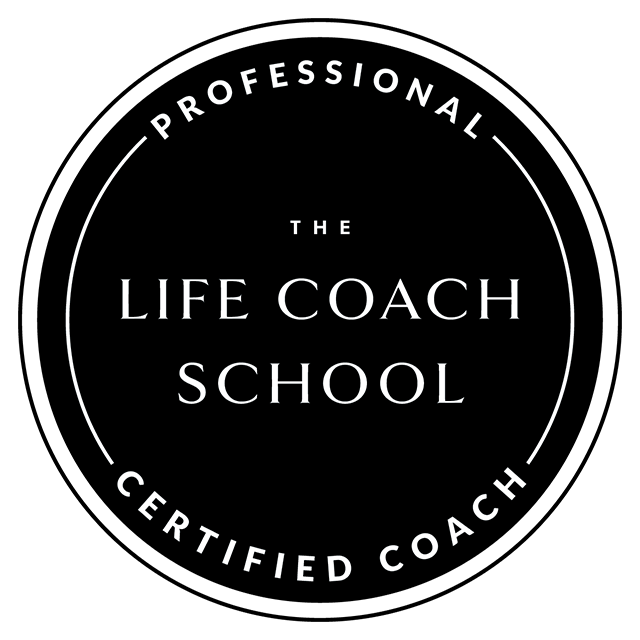How Do I Teach My Kids To Handle Their Emotions?
/We all know the importance of our kids knowing they are safe, loved, and whole. And yet sometimes it can feel like we don’t know how to convey that to our kids – daily life gets in the way, we lose our patience, or don’t have the time to sit with each individual kid like we would like to. Especially when kids are gone to school all day, or when we have all the work around home that needs to be done, how do we build that relationship with them so we can help establish physical, spiritual, and emotional health?
I was recently approached by a reader, asking some really good thought-provoking questions, and I’d like to address them in the next several posts here. Because we also know the effect that the early years of our life affects who we become as adults; these years influence what we think about ourselves, what we believe we’re capable of, how we interact in all the relationships of our life, etc. but we don’t always know how to teach our kids these things. How can you teach someone something that you don’t know how to do yourself?
Now, as we begin this topic, I want you to watch for anytime that you start to tally all the ways that you failed, all the times that you did the opposite of what you wished, and you may be starting to feel heavy or weighed down. If you find yourself reacting this way, I want you to stop. There is a time and place for that, and it isn’t here while you’re reading it. I guarantee that there are many ways that you wished you would have done better in your years of motherhood – whether you’ve been a mom for five or forty-five years – and I’d actually be more worried if you didn’t think that you had failed at anything. But what I want you to be careful of here, is the difference between responsibility and shame. Most people aren’t able to look back at their past and take responsibility for their actions. To admit that they did, in fact, not do it perfectly, and to have compassion and understanding for themselves and how they responded at that time.
Instead, there’s the tendency to become defensive and deny their part in something, to blame the other person, or to go completely the opposite direction and think they’re a failure, completely worthless, and deserving of all of the shame and agony that comes with the effects of their behaviors. Recognize if you head in any of these directions, and then remember that they aren’t going to help you move forward. I also recommend that if it feels particularly heavy or like you can’t move forward from this (or anything), that you reach out to a professional for help. There are so many incredible mental health professionals who are able to walk you through hard times so that you can be more of who you want to be again.
The last thing I want to add here, is that we find the tools that we need at the time that we are supposed to. Again – it can be easy to think Oh, I wish I knew about this ten/fifteen/thirty years ago! Life would have been so much better, or gone so much easier.. Why didn’t I know about this then?! And while I get this, I also trust that we didn’t have these tools then because we weren’t meant to. For whatever reason, you were meant to have the experience you did, I was meant to have the experience that I did, and our kids theirs. We can learn so much from what we’ve been through, and having everything go perfect and smoothly would mean a loss in learning. So trust that you’re reading this right when you need to, and that is that. So with all of that being said, let’s dive into what we can teach our kids so that they can become more of the happy, healthy, and whole adults that we would like them to be.
Q: How can we teach our children to manage their emotions?
Our emotions are a huge factor in our life. They’re the reason we do, or don’t do, every single thing. We want to feel love, connected, safe, and happy – that drives our behaviors of talking with friends, doing fun projects together, or giving gifts. We also don’t want to feel hurt, sad, disappointed, or insecure – that causes us to be careful with our hearts, not dream as big, or avoid conversations where we might not know the other person that well.
However, we also know that life will never be bubble wrapped. We are meant to feel pain. It is in that pain that we learn so much more about ourselves and others than we could ever know if we were always and only happy. But how do we manage our emotions? There’s been a huge shift in the past handful of years, or even generations, with how we deal with emotions. Many of us have grown up in homes where feelings aren’t okay – they’re something to push away, be quiet about, or not acknowledge. Whether that was on purpose or not, most people got the impression that to be loud or out of line was not acceptable. And if we look at it from a parental aspect, that really makes sense – because what do you do if you have ten kids and they’re all expressing their emotions at once, while you’re trying to nurse the baby, make supper, and do the laundry all at the same time? When we’re really busy as parents and don’t have the time or the energy to spend with kids feelings, it makes sense that we’d rather they just be quiet and feel happy all the time. Much easier for us to get our things done and enjoy a peaceable life.
We’re learning though, that when we teach our children that way, it doesn’t help them deal with their feelings when they get older and are in their own relationships. Of course this isn’t true across the board – not everybody has problems with their emotions – but there are children who need different tools or more support to learn how to handle their feelings.
One of the best ways to teach kids to manage their emotions, is by knowing how to manage yours. I know, bummer, right? Maybe you thought you could skip this part of the work, and just go straight to helping your kids;) I promise you though, the more you aren’t afraid of your own feelings the easier it will be to help your kids deal with theirs. As you teach yourself and apply tools in those hard moments, you’re going to have the knowledge and words to explain to your kids what to do in theirs.
So how do you teach yourself, as well as your kids, how to manage your feelings? Let me break it down into a few simple steps:
1. Know that life is 50/50. That means we will always have some positive and some negative feelings in our life – always. Maybe it won’t always be a perfectly even split, but when we are willing to have both positive and negative in our life, it’s going to take away the resistance to sometimes feeling angry, irritated, or sad.
2. Be able to feel your feelings. Feelings are sensations that we feel in our body, not something that we think in our brains. When we can notice a feeling and allow it to be there, it’s going to move through us. Every single time. It’s when we think that we shouldn’t be feeling something, or we don’t want to feel something, that it gets clogged up in us. Practice noticing what you feel and where (for example I feel tightness in my throat, or I feel a thrumming in my belly and chest) and just let it be there. You can describe it as best you can – sometimes that will be really descriptive with a color, temperature, texture, etc, and sometimes it will be only with one word. That’s all okay. This is a muscle that you’re building the more that you practice being with your feelings – don’t expect yourself to be a pro right away or get it right every single time. Let it feel awkward and unsure as you get to know your feelings.
3. Now if that last step didn’t scare you away, and you’re still here wanting to learn about managing yours and your kids emotions, let’s talk about what to do with the hard ones. Give yourself a pause. It’s usually the hard negative emotions that we’re more interested in learning to manage, like anger, rage, frustration, disappointment, grief, hurt, etc. One of the best things you can do, and you can teach your kids to do as well, is to take a moment to pause and to breathe when you notice a really strong feeling coming on. You never have to respond right away – I don’t care who you’re with or what situation you’re in. As long as everyone is physically safe in that moment, do what you can to take a moment away from the situation. Maybe you take a five minute rest in your bedroom. Maybe you hold up your finger to your kids, and you take three deep belly breaths. Wait until you feel yourself calm down enough to speak in a rational tone – and if you need several hours or days before you can do that, take that time as well. Most of us either react to, resist, or avoid these hard feelings, and it’s going to take some time and consistency to begin feeling that feeling and not responding in it, so take whatever you need to make that happen. I like to imagine my emotions on a scale of 1-10; anytime I’m feeling a feeling that is stronger than a five or a six, I don’t respond in because I know it won’t help anything. Of course this doesn’t mean that I’m perfect at it, but having a rule like that for myself helps me to stay in check with how I’m feeling and take responsibility for the effect I’m having in my relationships.
4. Name it. It’s incredible what simply putting language to a feeling can do for a body. It acknowledges it, and that alone is everything. Often times I hear my clients say I have no idea what I’m feeling, why, or where it’s coming from. This just leads us to feel like we’re a big muddled mess inside, which does nothing for helping us sort the inner mess out. Take your best guess at what you might be feeling, and let it land. Trust the first thing that comes out of your mouth – that’s usually the thing. I’m feeling mad. I’m feeling really sad. I’m feeling hurt because I wish that they didn’t do that. None of your feelings are bigger than you – you always have power over your feelings because they are sensations created by what’s in your brain, and beginning to name them will help you to see that.
5. Separate what you feel from what you do. (And have clear boundaries around the “do”.) Like I mentioned earlier, one of the reasons we think we shouldn’t feel things like anger or resentment is because of how we respond when we do. We yell, we slam doors, we snap at our husband, we treat our kids unkindly – all things that we can agree aren’t healthy or how we want to respond. Saying that it’s okay to feel angry however, doesn’t mean that we just let our kids yell at us or we get to treat our husband however we want to. Acknowledging that sometimes we feel upset and it isn’t okay to talk like that to your father is an excellent way to handle this mismatch. You never have to accept any behavior from anyone (yourself included) that doesn’t feel right – and holding strong to those boundaries is going to increase your ability to feel and deal with these harder emotions.
There’s so much more I could say on this topic, but at the risk of turning this one post into a whole book, I’ll leave it here. Start applying these tools for yourself, as well as your children, and see what you begin to takeaway from them. As always, if you have any questions or notice anything as you’re applying them, feel free to email me. You never know, you might just inspire another post!
Next week we’ll be diving into the question of what is a perfectionistic fantasy, and how to help our children (and again, ourselves;) avoid them. If this post impacted you in some way, feel free to share with a friend.


